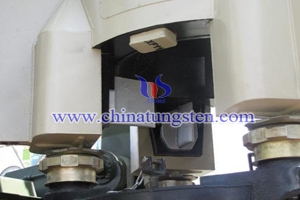Tungsten Copper Gas Vane
- Details
- Category: Tungsten Information
- Published on Tuesday, 20 September 2016 17:17
As a special wing in rocket jet, tungsten copper gas vane represents the thrust vector controlling technology. And it is indispensable in AAM active duty and in studying. Therefore, it has many strict design requirements as follow:
1. It should have a constant value close enough to lift the gradient to meet the maximum lift control requirements;
2. Differential gas vane should meet the requirements of rolling control;
3. Ensure small resistance to reduce the loss of engine thrust;
4. Rudder hinge moment and change the entire duration of the work to be relatively small in order to reduce the power requirements of the steering gear;
5. Gas vane small as far as possible, but should meet the strength and rigidity requirement. And reasonable location is convenient for attached parts designing and installation;
6. It can not produce mechanical interference when gas vane deflected to the maximum angle.
Based on the ablation mechanism, it can specifically divided into:
1. Effect of particle erosion: A large amount of high energy solid particles in gas stream impact the surface of gas vane intensely, which partial surface reach high temperatures in a short time and accelerate the material ablation. Besides, the surface roughness increases will lead to uneven distribution of the flow field to form a vortex, and lead to the accumulation of localized heat;
2. Mechanical erosion effects: the presence of a thermal expansion coefficient difference between the substrate materials caused by thermal stress generated when it exceeds the combined strength of the gas flow at supersonic peeling effect occurs.

| Tungsten Copper Supplier: Chinatungsten Online tungsten-copper.com | Tel.: 86 592 5129696; Fax: 86 592 5129797;Email:sales@chinatungsten.com |
| Tungsten News & Prices, 3G Version: http://3g.chinatungsten.com | Molybdenum News & Molybdenum Price: http://news.molybdenum.com.cn |



 sales@chinatungsten.com
sales@chinatungsten.com